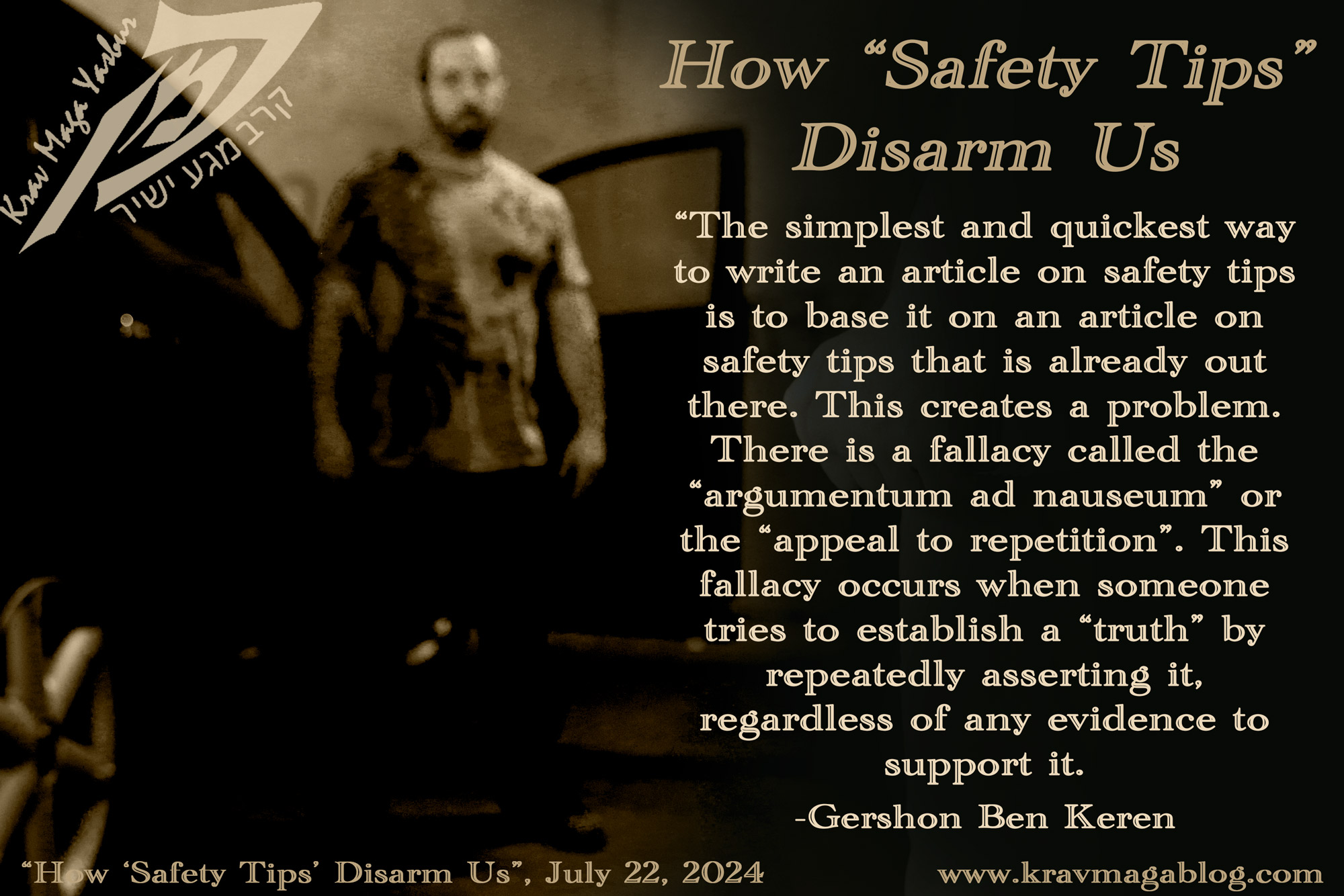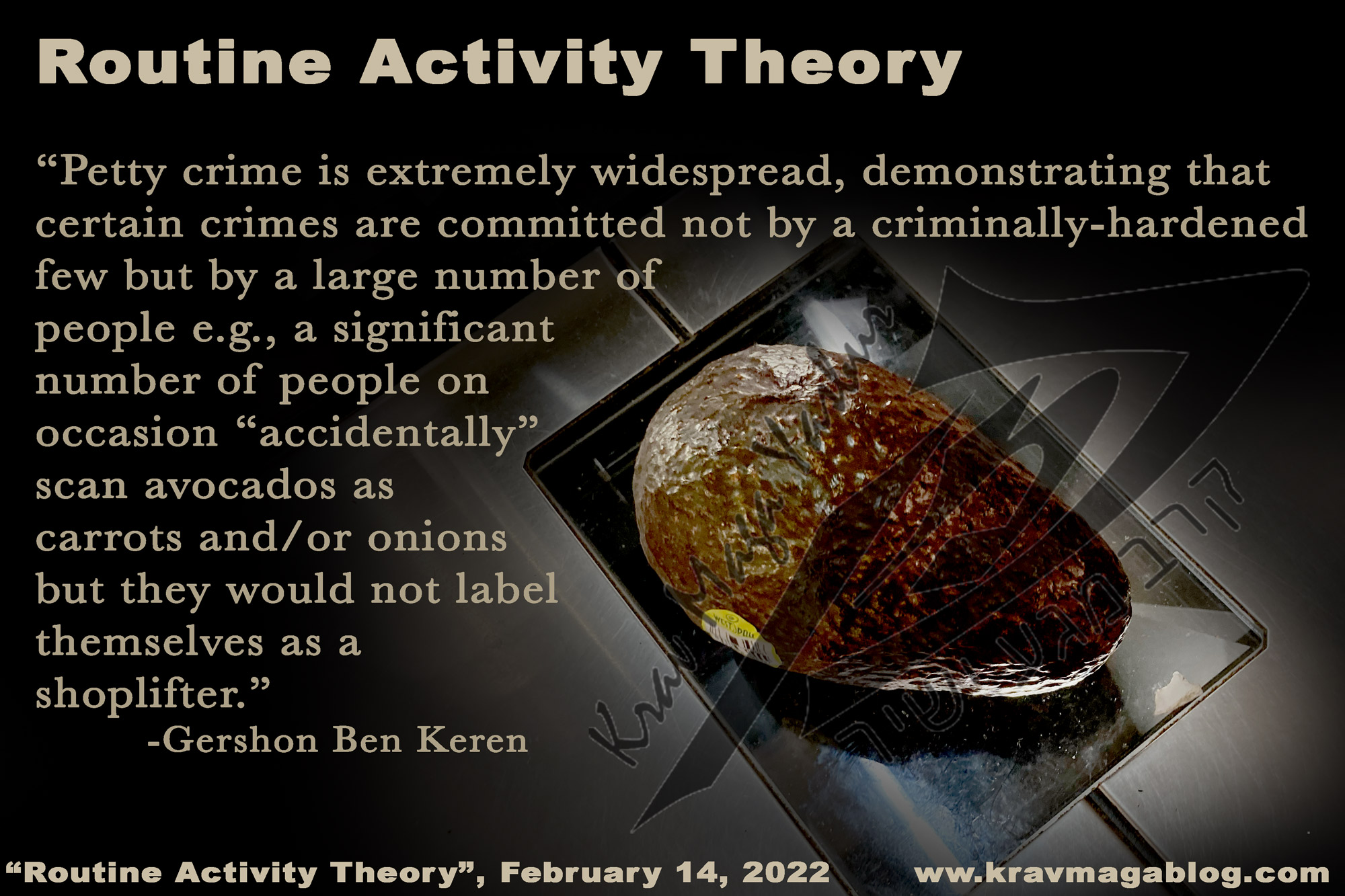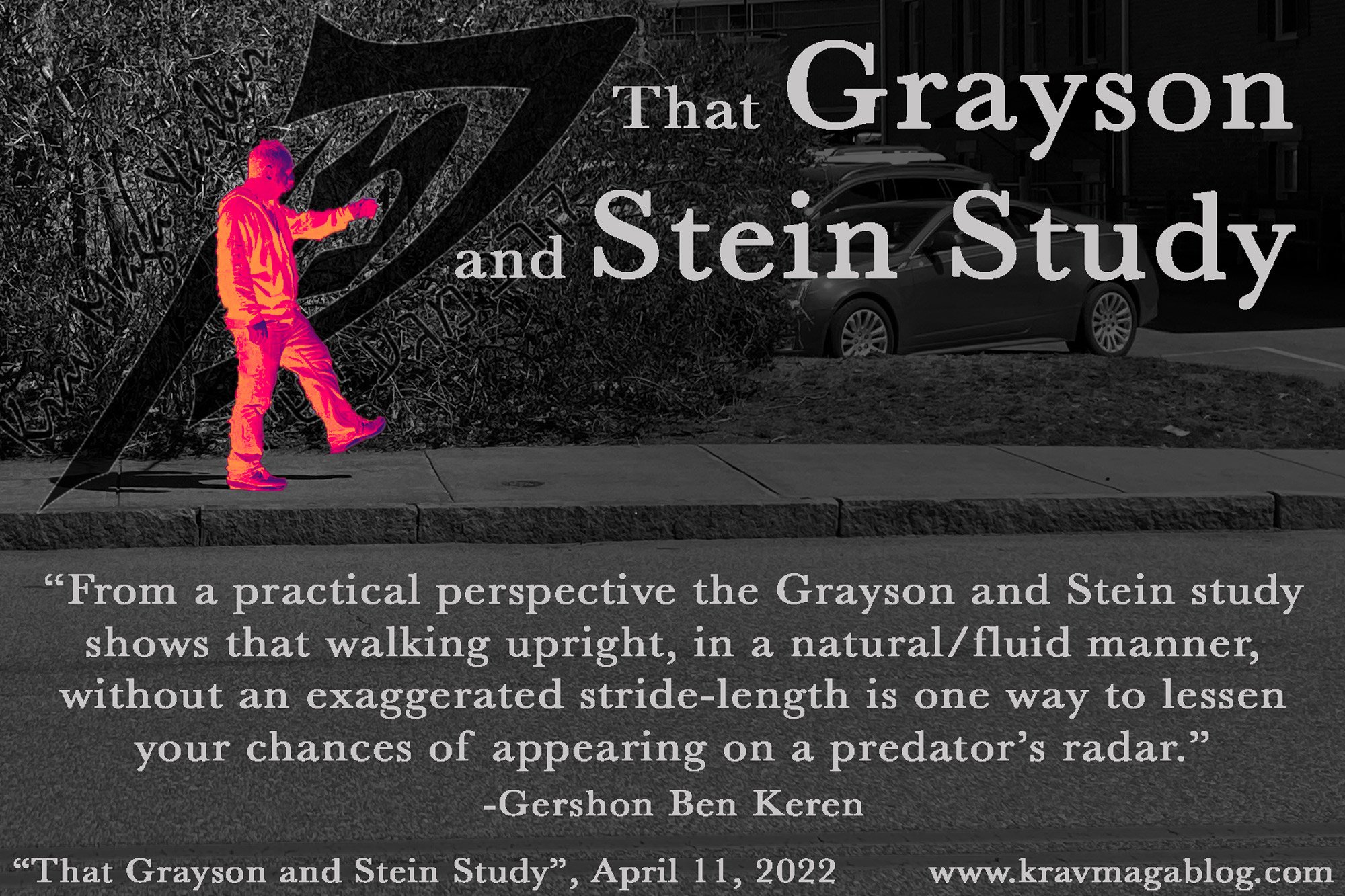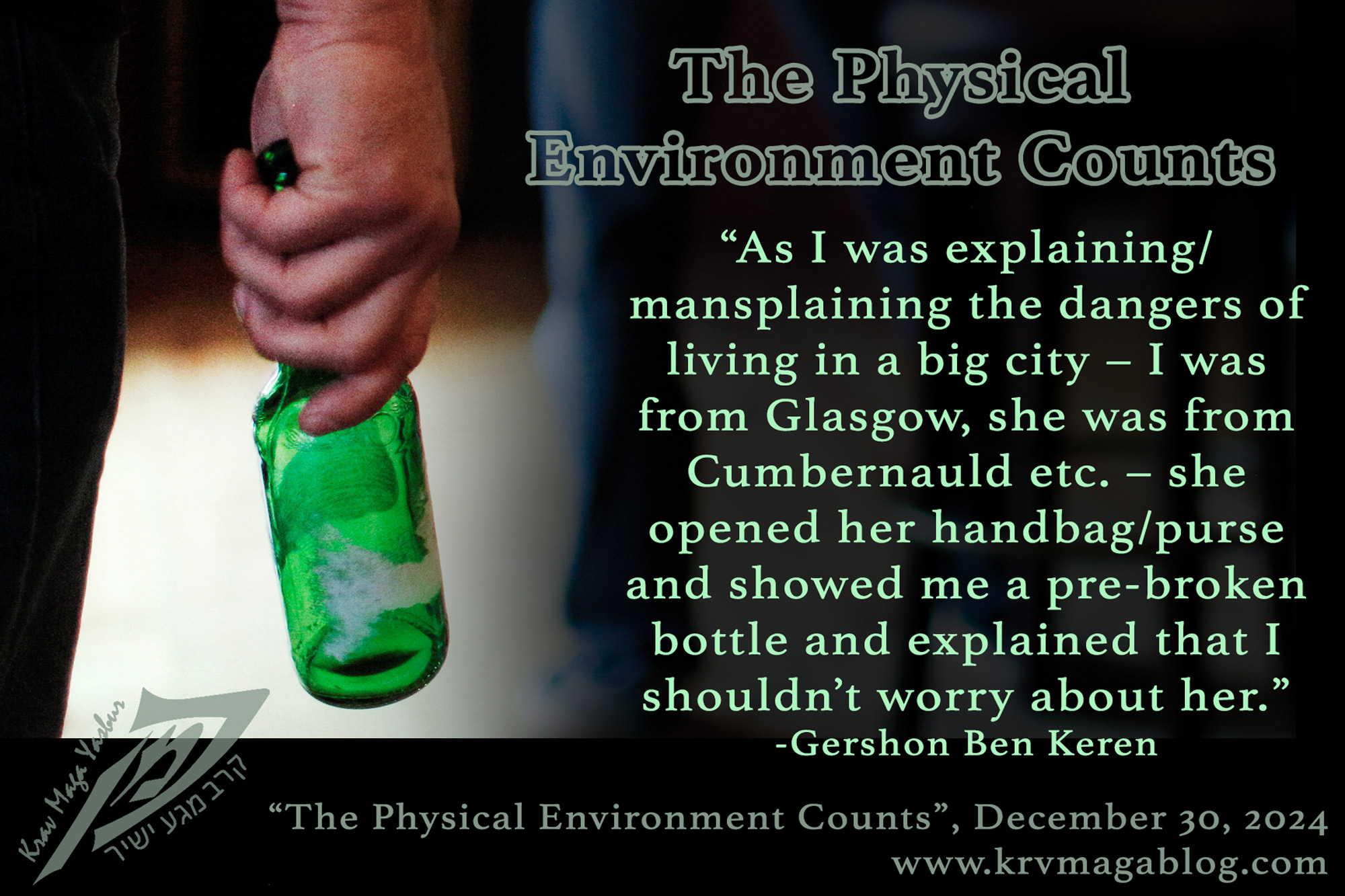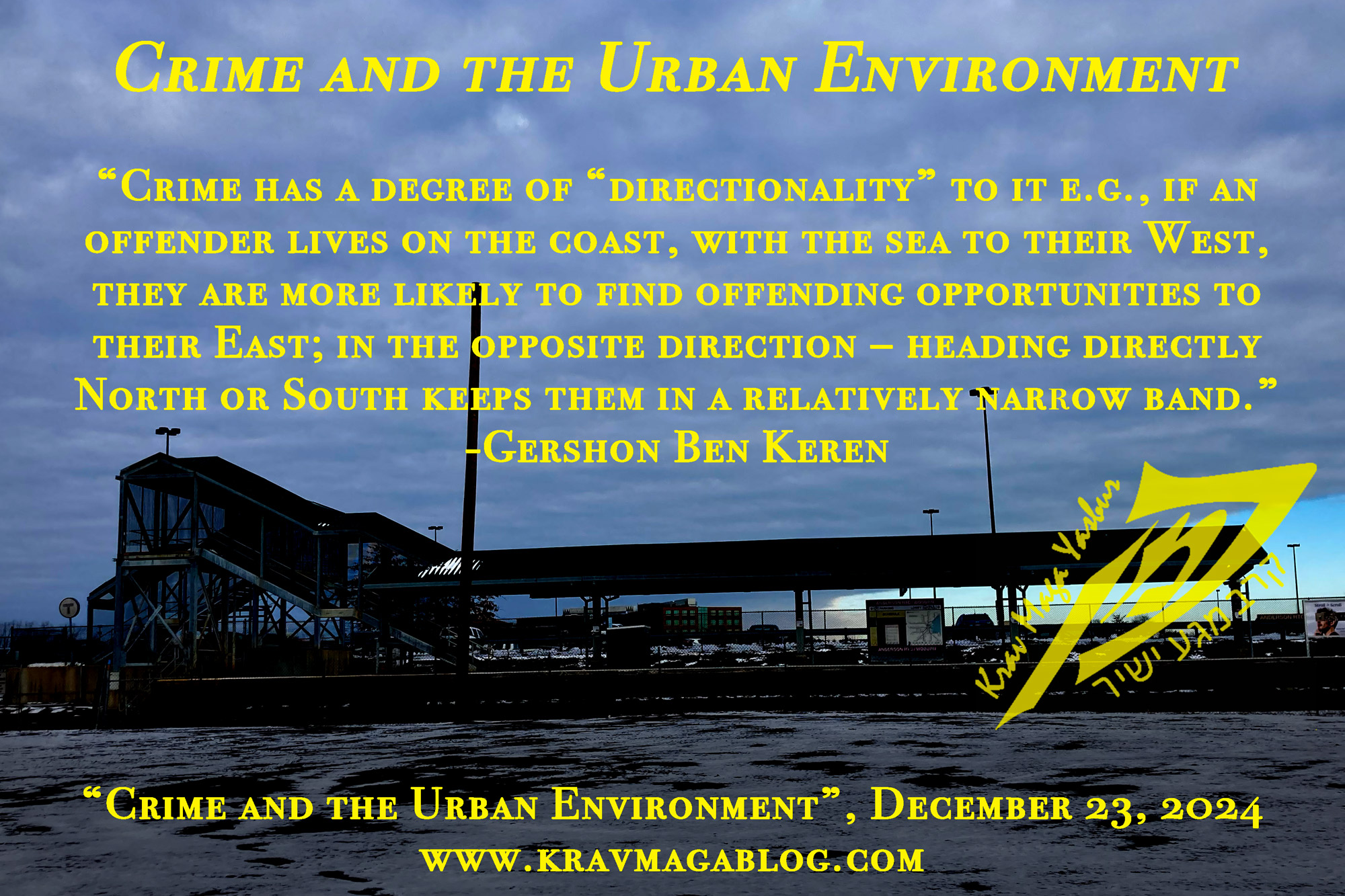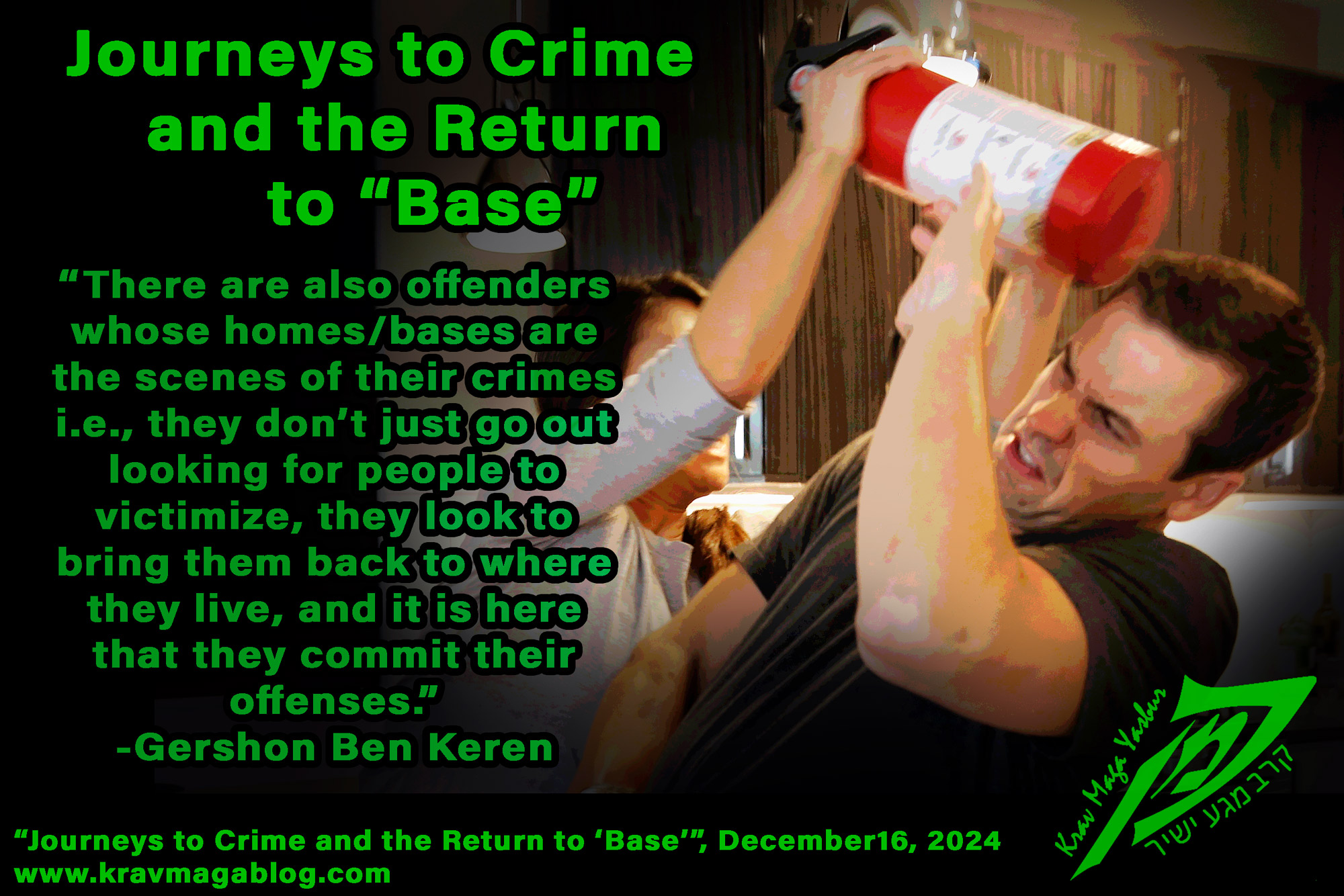That Grayson & Stein Study, is an article written by Gershon Ben Keren, a 5th Degree Black Belt in Krav Maga, who teaches Krav Maga in Boston, MA. He has also authored three Amazon best-Selling Books on Krav Maga.
There is a piece of research conducted in 1981 by Grayson and Stein that I reference a lot, when talking about victim selection, both in this blog, and when conducting corporate self-protection training or teaching my regular classes etc., however I realized recently that I hadn’t explained the research method(s), or the results in one place/article. In this article I want to take a look in more detail at this extremely important piece of research into the non-verbal/physical cues which indicate the level and degree of perceived vulnerability that predatory individuals look for when selecting victims. In the next article I will look at some other pieces of research that have expanded and built on this study on vulnerability and non-verbal cues, and have taken it in a number of different directions.
The original 1981 study by Grayson and Stein was incredibly simple. It involved setting up a video camera on a street in New York City, filming people (60 persons) as they walked by (between 10:00 AM and 12:00 pm over a three day period), and then showing the footage to convicted offenders (12 of them), whose crimes involved violence, and asking them to select those individuals who they would target/victimize (on a scale from 1 to 10), in order to discover if there were any identifiable non-verbal cues that were commonly picked up on/identified. A second set of inmates (53 individuals) were used to review the tapes, and “confirm”/“establish” the rating scale. Both groups labelled twenty of the people filmed as being “potentially easy victims” (as having a value of one to three on the rating scale), with nineteen individuals being labelled as “non-victims”. When considering age and gender, older individuals (as categorized by the researchers and a panel), were more likely to be judged as “assault targets”, and older men were more likely to be selected than older women – although not specified in this research, other studies/research have shown that offenders who commit street robberies often express the opinion that committing these type of offenses against women isn’t “masculine”, and that for this reason they only target men (something that the Grayson and Stein study confirmed for all age groups). The two groups – “victims” and “non-victims” – were then subjected to Labananalysis (a study of movement by 21 different components) by two separate analysts, where they were compared so as to distinguish what types of movement were different i.e., how did victims move differently to non-victims. It was discovered that between the two groups there were three distinct things that differentiated them.
The first was stride-length. Depending on your height you have a “natural” stride-length e.g., if you are shorter your stride-length is shorter, and if you are taller, it’s longer etc. It was found that in the victim group a large percentage (42%) had a longer stride length than in the non-victim group. It is important to note that when inmates were rating and selecting those individuals they would potentially victimize, none of them could explain or articulate why they chose the individuals they did. This means that any explanation as to why stride-length matters in victim selection is speculative and theoretical, however I will offer my own thoughts on its relevance. When I used to carry out surveillance on large crowds, I wasn’t ever searching for specific individuals, I would simply look at a large body of people and let my eyes be drawn to “unnatural” movements e.g., If I was watching a crowd moving towards a football stadium, I would “gaze” at the advancing mass of supporters and let my eyes be drawn to those individuals who were moving in the opposite direction etc. In nature this is known as the “oddity effect” where predators looking to select a target from a herd/flock/shoal will target an animal that looks different, for no other reason than it looks different e.g., a gazelle or wildebeest that has its horns painted white etc. This was one of the ways that was used to identify the Boston Marathon Bombers (the Tsarnaev brothers) in 2013; everyone else caught on CCTV at the finish line where the bombing took place were watching the runners complete the race, two individuals were turned away looking into/at a bag etc. It could be that a long stride length doesn’t indicate inherent vulnerability but rather that it simply draws the attention because it is something that is “out of place” and different. However, it could also be seen, as someone trying – even if this is not consciously – to look bigger/taller than they are; if you ask someone to try and look taller when they move they will usually increase the length of their stride when walking. Another difference between the groups was that all of the non-victims swung their feet, whilst no one in the victim group did, with 35% of them lifting their feet up and down as they walked.
Overall, the typical victim would walk unilaterally rather than contralaterally. The best way to think about this is by examining the way in which you walk e.g., if when you take a step with your right leg, your opposite/left arm swings you are walking contralaterally, however if your same side arm/right arm swings you are moving unilaterally. This lack of fluidity may draw the attention of predators, purely because it is different to the way the vast majority of people move, or it may demonstrate a lack of co-ordination and athleticism, which indicates a greater level of vulnerability etc. Another factor that contributes to “fluidity” is whether the body’s movement is postural or gestural. By and large those individuals who were perceived as victims, moved/walked in a gestural manner, where the arms, and legs, rather than the core seemed to dictate the movement e.g., the legs and arms were pulling the body/torso along, rather than the torso/main body moving, with the legs and arms assisting it etc. Postural movement also saw the head remain upright above the shoulders and the hips, rather than slumping with the eye-line directed towards the ground – something that signals low self-esteem/depression along with a lack of awareness concerning the environment.
From a practical perspective the Grayson and Stein study shows that walking upright, in a natural/fluid manner, without an exaggerated stride-length is one way to lessen your chances of appearing on a predator’s radar. This piece of research has since been replicated in a number of different ways, with different groups being investigated, and different elements being focused on etc. In the next article I will examine a few of these.
0 COMMENTS
